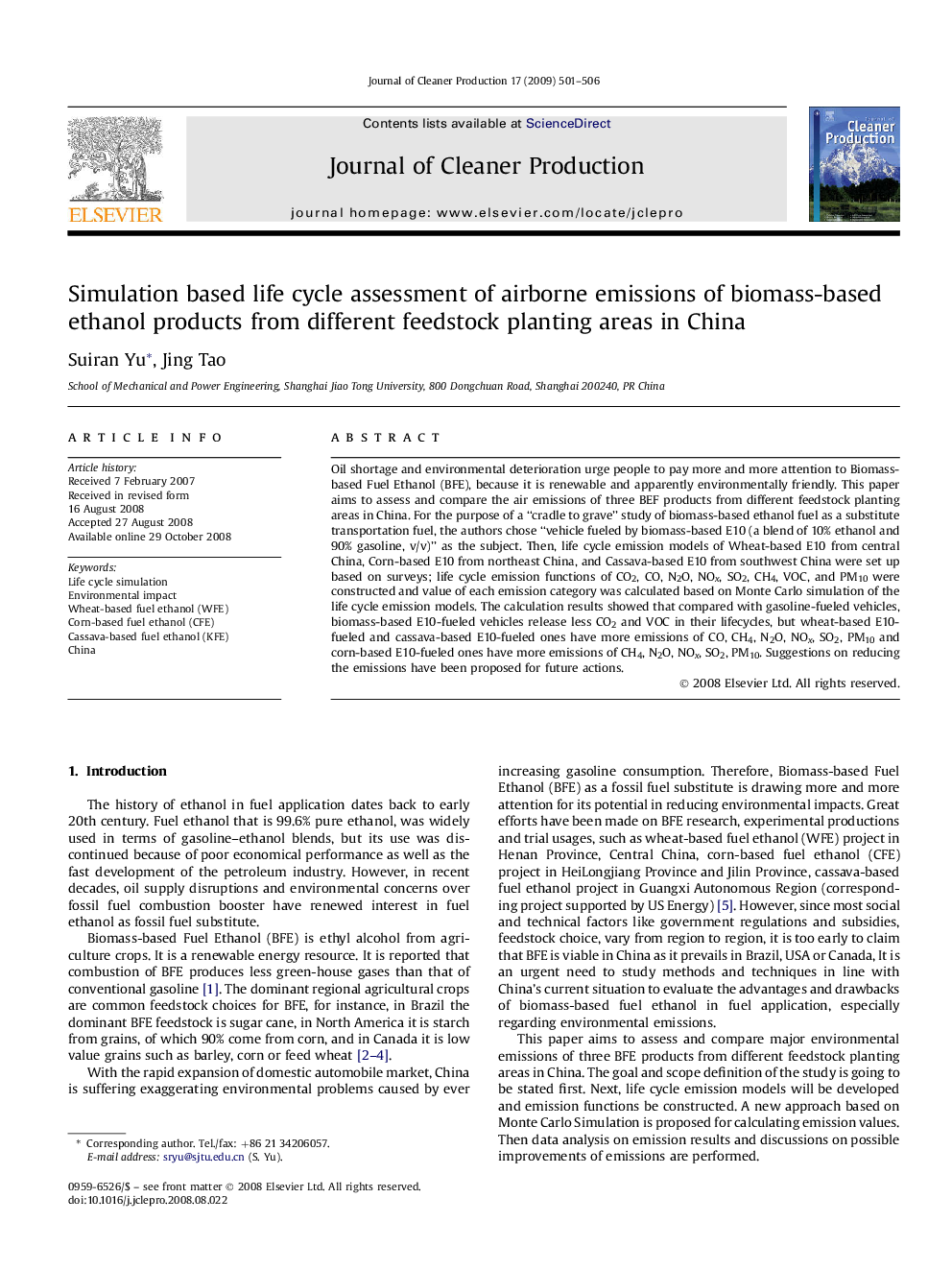| Article ID | Journal | Published Year | Pages | File Type |
|---|---|---|---|---|
| 1746786 | Journal of Cleaner Production | 2009 | 6 Pages |
Oil shortage and environmental deterioration urge people to pay more and more attention to Biomass-based Fuel Ethanol (BFE), because it is renewable and apparently environmentally friendly. This paper aims to assess and compare the air emissions of three BEF products from different feedstock planting areas in China. For the purpose of a “cradle to grave” study of biomass-based ethanol fuel as a substitute transportation fuel, the authors chose “vehicle fueled by biomass-based E10 (a blend of 10% ethanol and 90% gasoline, v/v)” as the subject. Then, life cycle emission models of Wheat-based E10 from central China, Corn-based E10 from northeast China, and Cassava-based E10 from southwest China were set up based on surveys; life cycle emission functions of CO2, CO, N2O, NOx, SO2, CH4, VOC, and PM10 were constructed and value of each emission category was calculated based on Monte Carlo simulation of the life cycle emission models. The calculation results showed that compared with gasoline-fueled vehicles, biomass-based E10-fueled vehicles release less CO2 and VOC in their lifecycles, but wheat-based E10-fueled and cassava-based E10-fueled ones have more emissions of CO, CH4, N2O, NOx, SO2, PM10 and corn-based E10-fueled ones have more emissions of CH4, N2O, NOx, SO2, PM10. Suggestions on reducing the emissions have been proposed for future actions.
